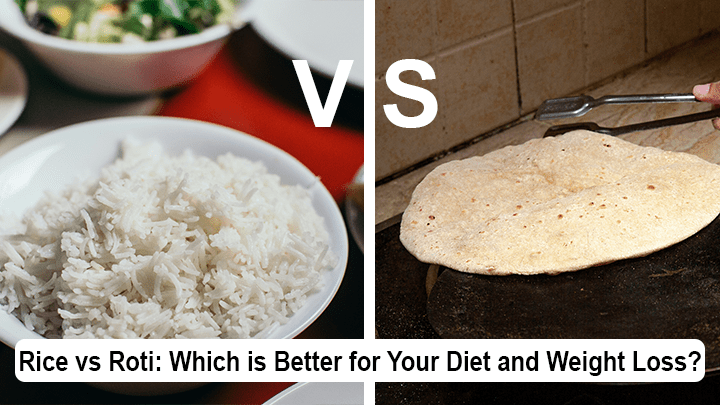
Rice and roti are staples of the Indian diet, loved for their versatility and nutritional benefits. However, when it comes to weight management, metabolism, and fitness, the debate over which is healthier continues. Here’s a comparison of their nutritional profiles to help you make informed choices.
Calorie Content of Rice and Roti
A 100-gram serving of cooked white rice contains about 130 calories. If you consume a cup of rice, roughly 200 grams, you’re looking at 260 calories. White rice is polished, which strips it of fiber-rich bran and germ.
Brown rice is a healthier option, offering more fiber and nutrients. A 100-gram serving of cooked brown rice has 110-120 calories, depending on the variety.
In contrast, a medium-sized roti, weighing around 40 grams, has approximately 120 calories. Made from whole wheat flour, it’s rich in fiber and protein. Adding ghee or oil increases its calorie count.
Nutritional Benefits
Rice is predominantly carbohydrates, with minimal protein and almost no fat. Fortified white rice contains added vitamins like folic acid and iron. Brown rice naturally provides magnesium, phosphorus, selenium, and about 1.8 grams of fiber per 100 grams.
Whole wheat roti offers a balanced mix of carbohydrates, protein, and fiber. One roti contains 2.5-3 grams of protein and about 2 grams of fiber. The protein and complex carbs in roti make it more filling than rice.
Glycemic Index and Blood Sugar Impact
White rice has a high glycemic index, causing a rapid rise in blood sugar. Brown rice and whole wheat roti, with their lower glycemic index, are better for managing blood sugar levels.
Roti is a healthier choice for those with diabetes due to its slow digestion and blood sugar stability. However, rice is naturally gluten-free, making it suitable for individuals with gluten intolerance or celiac disease.
Weight Management and Digestive Health
For weight loss, brown rice or whole wheat roti is preferable due to their higher fiber content. Fiber promotes satiety, aids digestion, and helps maintain stable energy levels.
If you’re managing digestive issues, white rice can be gentler on the stomach and easier to digest. After workouts, white rice provides a quick source of energy, making it a good recovery food.
The Verdict
Both rice and roti have unique health benefits. Brown rice is ideal for those avoiding gluten while seeking whole grains. Whole wheat roti supports stable blood sugar levels and is more filling.
For a balanced diet, enjoy both in moderation. Pair them with proteins like dal, curd, or meat and plenty of vegetables. Ultimately, mindful eating, portion control, and a varied diet will contribute most to your health.
Disclaimer: The information provided on Timeshub360.com is for general informational purposes only. All content is gathered from credible sources and presented to the best of our knowledge. However, Timeshub360 does not make any warranties about the completeness, reliability, or accuracy of this information. Any action you take based on the information on this website is strictly at your own risk. Timeshub360 will not be liable for any losses or damages in connection with the use of our website. Always consult a professional or conduct your own research before making decisions based on the information provided here.


